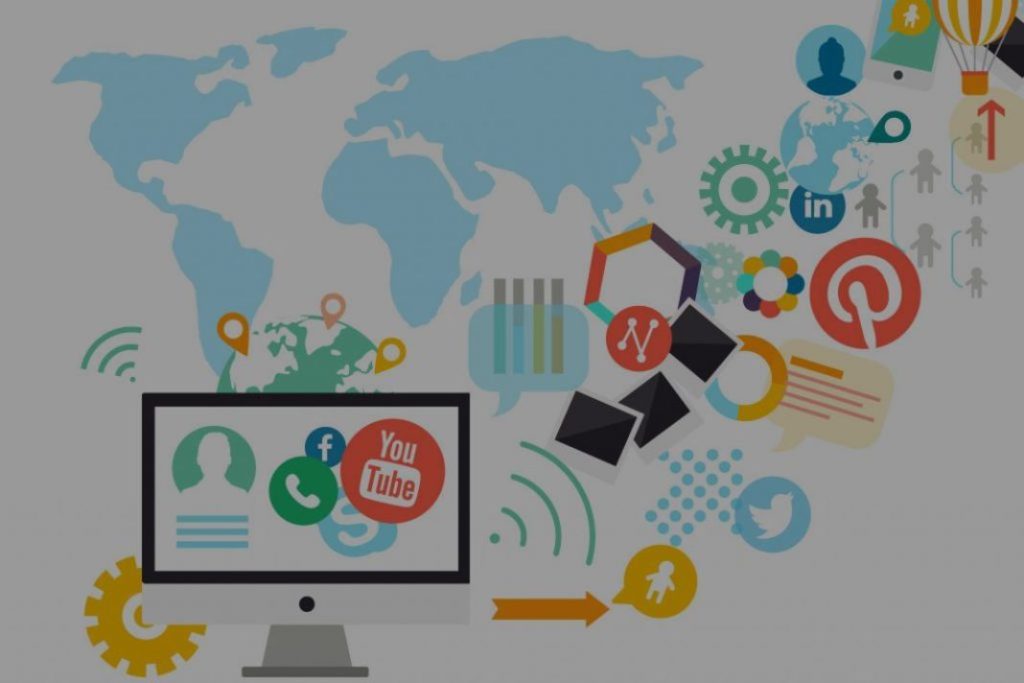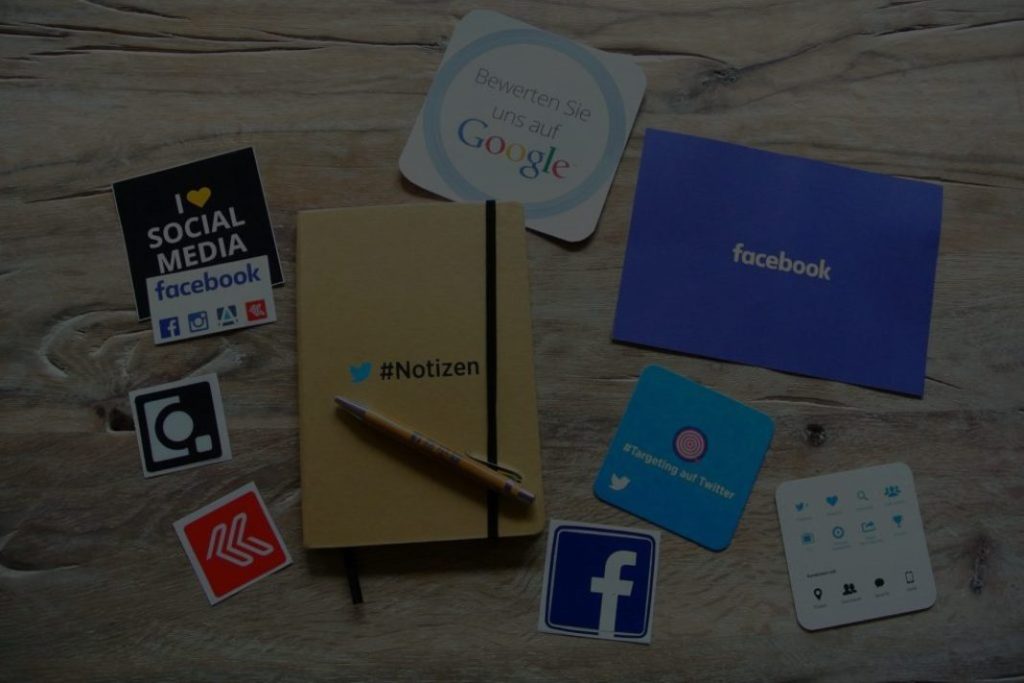How to Define & Measure Social KPIs – Part -1
This article provides a comprehensive guide to defining and measuring KPIs for social media, including how to track KPIs.

Prologue
While creating & running social media campaigns, marketers have all kinds of questions in mind, whether they are relevant, whether they will appeal to the buyer persona & whether they are worth the investments made.
58% of the businesses measure ROI in terms of engagement i.e. likes & shares & yet 56% of marketers think they are unable to track their social media revenue (Source: socialbakers.com).
54% of social browsers use social media to research products (Source: GlobalWebIndex, 2018) & 74% of the customers who have had a positive experience with a brand on social media are likely to recommend the brand to their friends & families (Source: Forbes, 2018). Moreover, 73% of marketers believe that their efforts through social media marketing have been somehow or majorly effective for their businesses (Source: Buffer, 2019).
Over 88% of companies are now marketing on social media & over half of social media, users interact with brands more than once a month (Source: seoexpertbrad.com). According to a report by Pew Research Centre, 67% of Americans report that they get at least some of their news on social media, primarily on Facebook & Twitter.
Thus, it is crucial that businesses not only register their presence on social media & use it as a platform to promote their products or services but also figure out the ways to align the social media campaigns with their bottom-line goal of Conversion Rate Optimization (CRO). Running advertising, promotional & lead generation campaigns on social media platforms is essential as nowadays customers are the kings & they prefer to consume content in their own preferred ways. Marketers need to respect the researching habits of the customers & evolve with it.
Consider a hypothetical scenario where is a product is being promoted only on the company website & not on the social media platforms. The potential customers might research for those products on Facebook or Twitter & if they don’t find any information there, they might cease to research & the marketers might lose a very good chance of optimizing their revenue by converting these customers. Thus, to build a strong & perennial sales pipeline, it is imperative for the marketers to leverage social media for various campaigns as well as to measure the success of their social endeavors, so as to align them with the ultimate goal of Return on Investment (ROI).
The importance of social media as effective referral channels for lead generation & nurturing have been undervalued by the marketers for a long while, particularly due to the fact that the conventional analytical method has neglected to align social media metrics with the Key Performance Indicators (KPIs) of the businesses. The business KPIs have largely only been defined on the basis of website traffic & how they generate the conversions.
The fact that social media channels have always served as sources of referral traffic through several referring domains leading to the increase in the website traffic was understood long back; however, marketers realized the importance of defining & measuring the conversions on the social channels much later.
Even today, the marketing efforts through social media aren’t commensurate with the efforts being put in – the primary reason being that the metrics aligned with the social advertising & promotion endeavors aren’t being defined properly. Not only this, but the marketers also need to realize that they need to define the Key Performance Indicators (KPIs) aligned to social media campaigns & also align them with their prime objective of achieving an optimized Return on Investment (ROI).
Apart from the direct visits on the website URL, organic visits & display advertising ads are often two other major drivers of the website traffic. The main question for the marketers is how to allocate the budget for ad campaigns on each of the social media channels & whether being on all of them at the same time serves the purpose. There is no hard & fast answer to this question unless the marketers start with the campaigns first.
Experiments with running small promotional & ad campaigns on several social media channels & even split-testing them for a while, gives the marketers an idea of which platforms are performing best for them in terms of bringing in more potential buyers & keeping them engaged. User engagement is the most important matrix to start with. Once the brands figure out which types of content are performing the best, they can further start diving deeper into analytics & proceed towards defining the Social KPIs aligned with their businesses.
Well-ordered social media advertising & promotions have the following key advantages:
- It drives traffic on the main website through several referral channels & through display ads
- It helps in building & maintaining Brand Equity
- It helps in reputation building & management for the brand
- Helps people interact with the brand by talking about the brand
- Attracts, brand followers, evangelists & influencers who further help the brand in building its credibility as well as provide a platform to the existing & potential customers to spread positive word-of-mouth interactions
Social Media KPIs
While the KPIs for every marketer can vary as per there business requirements & objectives, there are some universal KPIs which need to be tracked on all the social media channels. The main aim of the marketers is to increase their impressions through several social channels.
Thus, it is essential that the marketers integrate their social channel data & web analytics data to deduce which social media channels bring the highest number of referral traffic & how that traffic converts on the website. Identifying the percentage of social media traffic that converts into sales is important for optimizing conversion rates.
Furthermore, identifying loopholes in the social media strategies with the help of measuring the metrics such as bounce rates through the social channels, in turn, helps in improving the social media promotional & advertising campaigns.
Following are some of the Social KPIs that can be used by the marketers to measure the efforts of their social marketing campaigns:
- Likes
- Engagement
- Number of Followers & the growth in their number over a period of time
- Traffic Conversion Rate (Visit & Visitors Conversion Rate)
- Social Interactions
- Social Sentiment Analysis
- Social Visitor Goals
- Social Shares
- Website traffic through social referral channels
- Conversion Rate of Social Visitors
Above are the must-have metrics for any social media dashboard that help in calculating the Social Media Return on Investment (ROI) or simply the Social Media ROI.
According to Social Media Examiner, “Social ROI is defined as a measure of the efficiency of a social media marketing campaign.” Social Media ROI is monetary proof of whether or not social marketing efforts are working.
Social Media ROI = (Social Media Return – Social Media Investment) / (Social Media Investment) %
Investment is calculated by adding total labor cost (Time) associated with social media tools, the monthly or weekly cost of using these products or services & the advertising budget.
The KPIs to track the Social Media ROI are as under:
- Lifetime Value
- Average Sale & the
- Pay per Click (PPC)
Tools to measure Social Media Metrics
1. PostRank:
This is a great tool to measure the performance of content with RSS feed. The platform now, however, has been purchased by Google & cannot track Facebook data.
2. Bit.ly:
This platform provides accurate analytics for those seeking accurate analytics about the pages they share. It is an excellent platform for tracking Click-Through-Rates (CTRs) on content from any device or medium. Besides serving as a tool for link shortening, Bit.ly also may help in measuring Twitter ROI by tracking the success of links placed on Twitter.
3. Redian6:
This is arguably one of the best social media monitoring tools with impressive social tracking, sentiment analysis & reporting capabilities. (Services are ideally suited for enterprises & large budgets).
4. BackType:
This marketing intelligence platform helps brands & agencies understand the business impact of social media. It was acquired by Twitter on Jul 5, 2011, & powers social features for companies including The New York Times, SlideShare, Automattic & more.
5. Social Mention:
This platform enables social updates like “Google Alerts” from social media platforms, Twitter in particular.
6. Raven Tools:
This offers help with both search & social tracking functionality.
7. Conversion:
This social & web monitoring tool offers sentiment analysis reports reviewed by humans.
8. Pagelever:
This tool has been designed to track Facebook interactions & pages & provides a more in-depth analysis than native insights functionality.
9. TwitterCounter:
This tool allows monitoring Twitter accounts over time & even provides analysis of “mentions” & “re-tweets”.
10. FollowerWonk:
This is more of a social discovery tool & allows the analysis of the overlapping number of followers, with regard to the competitors.
11. Social Bakers:
This tool facilitates monitoring Facebook & Twitter & unique Facebook sources like Places & Apps
12. Crowdbooster:
This tool helps in improving social reach by focusing on providing tips such as perfect timings for posts & suggesting users for engagement.
13. Awe.sm:
This tool helps in link & content tracking & also has a very pretty interface.
14. TwentyFeet:
This tool has an aggregation of metrics & a data stream from Facebook, Twitter & YouTube
15. SimplyMeasured:
This platform facilitates reporting through excel exports & allows reporting through excel dashboards that look like cool streams of data.
16. Most Shared Posts:
This plugin from WordPress allows the WordPress users to see the most shared posts on Google+, Facebook & Twitter.
Important KPIs for several Social Media Platforms
Analyzing each of the social media platforms, the ad & content format at display there & aligning the metrics with the marketing objectives of a company helps the social media marketers & managers to achieve the bottom-line goal of increasing their revenue & therefore is an indispensable part of Social Media Optimization (SMO).
Measuring & analyzing the efforts of social media marketing by defining Social KPIs & metrics not only helps in improving the ad campaigns but also helps in selectively investing only in the posts that have the greatest potential to drive results.
Facebook KPIs
For 67% of marketers, Facebook is the most important social platform for advertising & 70% of the marketers agree that they use Facebook to acquire new customers (Source: 99firms.com). In fact, 93% of social media advertisers use Facebook ads (Source: 99firms.com).</em
Undoubtedly, Facebook has been a Launchpad for the promotion of products & services. The platform claims to have a $20 average social media ROI per user (Source: socialbakers.com) which is pretty healthy.
A Facebook key performance indicator carefully accesses & measures specific details of Facebook Fan Page, a specific campaign or a shared piece of content.
Unlike a Facebook metric, a Facebook KPI is well aligned with the overall business objectives of an organization such as something that ultimately drives revenue. The key difference between a metric & a KPI is that all KPIs are metrics, every measurable marketing endeavor on social media (whether or not it is directly aligned with the core business objectives of an organization) is a metric & thus, not all metrics are KPIs.
Brian Peters, Strategic Partnerships Manager for Buffer, stated the importance of measuring Facebook KPIs as follows:
“Over the years, we’ve learned that the best way to reach our audiences on Facebook is to study the data, experiment constantly, be open to learning, and take a growth mindset.”
Following are some of the most important Facebook KPIs:
1. The number of Relevant Fans:
Tracking the number of relevant fans that are actually aligned with your marketing objectives & which in future can generate sales conversions for a company, is extremely important. Furthermore, a Facebook dashboard can display whether the number of audiences on the business page is from particular demography.
The content strategy can be framed according to the demographic preference of the audiences. Tracking the increase or decrease in the number of relevant fans on the Facebook page over a period of time & aligning it with the internal & external factors may help figure out factors that lead to increase or decrease in the number of audiences & accordingly a more impactful content strategy can be framed.
2. Follower Demographics:
Getting to know from where the audiences on the website are coming from helps to understand the preference of the audiences in terms of language. Further refining the demographic data by applying filters of gender, technographic & firmographic helps the marketers deliver hyper-personalized content to their audiences.
Marketers should remember that audiences are looking for answers to their problem areas & aren’t interested in pieces of information that a company thinks is important for them to know.
Giving information in the form of a personalized content (story), which aligns with the “fit-data” of the audiences, after psycho-analyzing them on the basis of their research habits, is an impactful way for advertisers to improve their Return on Investment (ROI).
Modifications can also be made in the tone of a piece of content to appeal to a wider group of audiences, based on their gender.
3. Page Views through several Referral Channels:
Tracking the webpages or websites that lead to the highest number of audiences on a business’ fan page is an impactful strategy to know your audiences & further personalizing their experiences by segmenting them into several groups.
Referral traffic from diverse social media channels on the homepage of a business website can be tracked & it can be derived which social media channel is the highest contributor to the referral traffic. When applying the same strategy on Facebook, the marketers can fragment Facebook traffic data to deduce what percentage of it is being contributed by different websites & which of them fetch the highest percentage of traffic.
The percentage of traffic from the websites’ home-page’ to Facebook can also be tracked.
One of the most important Facebook KPIs is measuring the percentage of visitors who are performing a desired action on the website. This metric shows what percentage of the audiences have clicked on the Hours & Directions Page of the website, have clicked on the phone number or enquire via an email button or have clicked any other Call-To-Action (CTA) button present on the page.
Conversion metrics are directly aligned with the Return on Investment for any organization & analyzing the percentage of visits or visitors that generate conversions on the website very important.
Furthermore, the factors aligned with micro-conversions on the site may also be tracked to further optimize the conversions through Facebook. Analyzing what percentage of users engage & generate conversions on the website through local, national & international channels helps in targeting & re-targeting the audiences based on their demographic radii.
5. Audience Reach on the basis of Post Type:
Analyzing which types of posts perform the best for the audiences can help in personalizing the content type as per the preference of the audiences.
A study by BuzzSumo shows that Videos get at least 59% more engagement than other post types & they have outperformed photos (favorite amongst marketers) by 73%.
It’s so because people resonate more with stories than they do with other forms of content.
However, depending on the audience base that a company has, the most engaging content can vary from videos to links to statuses, to even photos.
Analyzing the preferred content type helps in Conversion Rate Optimization (CRO) by engaging the audiences better. When talking about the content, marketers should remember that if engagement is the goal, it’s about quality & not quantity.
6. Engagement Rate per Post:
Tracking the average engagement rate is important for two reasons, first, it helps in deciding about the preferable form of content for your buyer persona viz. links, photos, statuses or videos & second it also helps in quantifying the quality & relevance of the marketers’ posts for the audiences.
The KPI actually helps explore what percentage of the total audiences who view a particular post actually prefer to like, comment or share it.
Thus the Average Engagement Rate KPI can further act as a signaling pathway for the marketers to modify their strategies to resonate with the interests of the buyer persona.
7. Click-Through-Rate (CTR):
The Click-Through-Rate (CTR) is the total number of clicks on the posts divided by the total impressions & the fraction multiplied by 100. This is one of the most important KPIs of Facebook as it gives the total number of people who click on the links being displayed in the posts or the who click on the promotional ads on Facebook.
Defining a standard CTR is tough as it varies for several industries. Also, Organic posts generate greater Click-Through-Rate than the paid ones.
So, while an organic news feed can pretty easily generate a CTR of up-to 5%, for paid Ad campaigns an ROI between 1.5-2.0% is healthy (Source: Hootsuite.com)
A healthy CTR is imperative to affirm the success of any Facebook Campaign. If the CTR starts to drop marketers should start analyzing the reasons to make it work. Keeping abreast with industry standards always helps. Benchmarking the industry standards and researching about what a specific buyer persona prefers to click-through is a useful practice to maintain a healthy CTR by sticking to the type of content that the prospects prefer.
8. Impressions Generated through Ads & their Frequency distribution:
Impressions are a measure of how many times the ads were served; the reach of ads is the number of times the ads were served to a unique set of people. The frequency distribution of an ad is the total number of impressions generated divided by the total reach of the ad.
In general, a higher frequency distribution per prospect is aligned with lesser chances of the prospect generating conversions & is also aligned with a lower CTR.
A post must be monitored to ensure that the same ad isn’t served multiple times to a prospect.
9. CPM & CTR for Ads:
Deciding about the cost of social media campaigns is never easy. It takes split testing & much experimentation & analysis before the marketers can make out which campaigns are working for them & which ones they should stick to in order to increase their revenue.
Cost per thousand (CPM) & Click-Through-Rate are the two KPIs that help decide whether running a social media campaign is worth the investment being made.
When talking about the cost of the ad campaigns, the metrics which the marketers use to measure the success of their ad campaigns matters a lot.
Often the marketers on social media prefer to pay for impressions. When paying for impressions, the marketers prefer to have higher CTR & the CPM as this will lessen the cost involved in generating a click.
A precognitive & highly targeted ad campaign is aligned with high CTR & higher CPM whereas a broad targeting is often associated with lower CPM & lower CTR.
10. Cost per Conversion:
No matter how impactful the ad campaigns on Facebook are, they should be cost-effective for generating positive ROI. A lower cost-per-click (CPC) may not essentially fetch a healthy conversion on the website, depending upon the quality of ad placement.
So, in the end, it’s pointless if a lower CPC ends up producing higher costs for traffic conversion. Social media campaigns, therefore, need to be properly analyzed and better should be highly targeted to generate a lower cost per conversion.
Furthermore, different marketing companies have different ways to track conversions. So, the most evolved practices not just monitor the conversions on Facebook but essentially what actions the converted prospects take afterward.
Analyzing each KPI on Facebook is important. The results deduced or trending should further be integrated with the results of website analytics to figure out ways to achieve the bottom-line goal of Conversion Rate Optimization (CRO) as well as fix the loopholes in Facebook Ad & promotional campaigns to strengthen the KPIs.
Conclusion
Defining & measuring social media KPIs is imperative for marketers to survive fierce competition within the marketplace. The social media metrics function differently on each social media platform through their basic motive is to engage with the relevant buyer-persona, expand their reach to appeal to a large chunk of audiences & generating traffic through different referral channels, generating new leads & optimizing the endeavors of several social campaigns & ultimately Conversion Rate Optimization (CRO), by making larger number of sales conversions which might start with micro-conversions on the social media platforms themselves.
In the first part of the post we have explored about marketing tactics to measure Facebook KPIs. Stay tuned for the following sections in which we will discuss tactics to measure other social KPIs.
The social media KPIs being selected must also be most relevant to the social platforms that the brands are active on & the platforms must in-turn have enough evidence of relevant audience behavior.
Social KPIs should be defined & measured in a manner that they resonate with the ROI of the brands & must in-turn help the brands in optimizing it. While some basic practices can help the marketers get started with, from the scratch, the clarity is gained only after some experimentation with alternative strategies has been done & KPIs have been A/B tested to figure out which ones are the most relevant for a particular market niche.
Valasys Media is sponsoring the CMO & Future of Marketing Summit, to be held at Grosvenor House, Dubai between 23/9/2019 to 25/9/2019.
Various stalwarts from diverse areas will share their insights on topics such as omnichannel marketing, marketing automation & cloud, account-based marketing & agile marketing.
Measuring the efforts of social media marketing & social media marketing endeavors, in general, will be a hot topic of discussion for the marketers as well as the industry-experts participating in the event. The following discussions in the conference are dedicated to social media:
- MARKETING LEADERS EXCHANGE
Evolve: Revaluating your ROI strategy – Are you doing it right? (On Day 1)
- Getting the most out of social media and how to measure its success
(Session reserved for Talkwalker on Day 2)
- The customer – The real MVP: From instinct to insights (On Day 1)
- TECH TALK
Multimedia content is no more a luxury but a necessity (On Day 2)
- TECH TALK
LinkedIn and social media ABM for improving relationships and enhancing engagement and revenues
- PANEL DISCUSSION
Stories, Live, TV, Quizzes, Augmented Reality and what not? How has social media evolved and what does it mean for your content? (On Day Two)
- SOCIAL MEDIA
How Social media is impacting user behavior (On Day Two)
The businesspeople can refer to the link below to register their presence at the event:
https://www.iqpc.com/events-futureofmarketing
One can also call IQPC on +971 4 360 2800 or drop them an email at partnership@iqpc.ae if one has any queries about the event.
Valasys Media is a well-known name in the field of B2B marketing services & we provide a wide array of services such as lead generation, account-based marketing, lead nurturing, event promotion services, list building services & content syndication services to name a few.
Our services are custom made to help our clients with their core bottom-line endeavors such as sales revenue optimization, elevating the indexes of their customers’ experiences (CX-Index) & improving their returns on marketing investment (ROMI). For revamping your B2B marketing endeavors towards an optimized Return on Investment (ROI) and for the furtherance of perennially healthy sales pipelines, feel free to get in touch with our team of experts.



